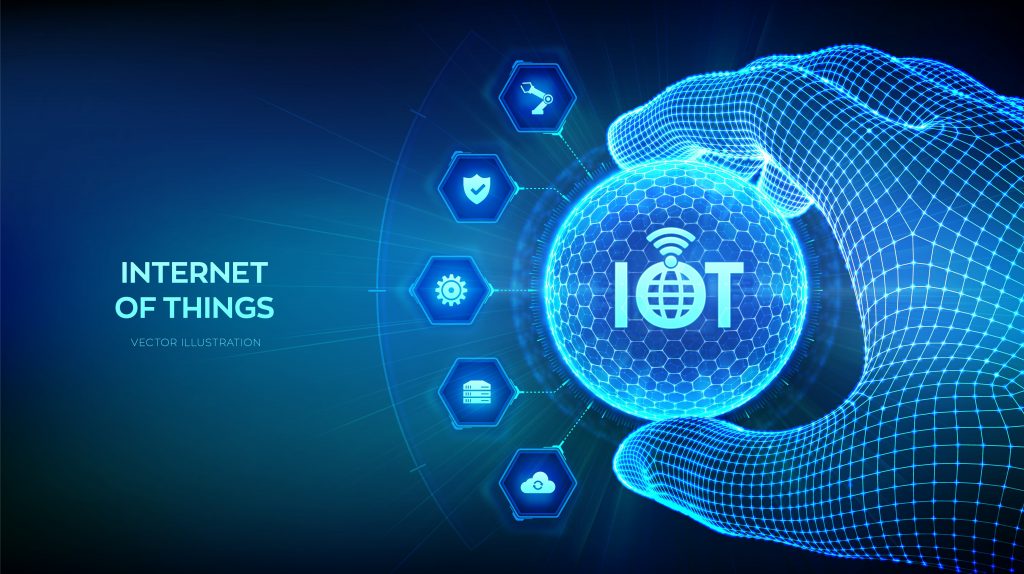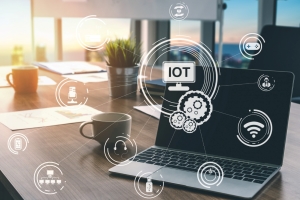This is a connected world. Whenever you look around, says Ritesh Sutaria of Prompt Softech, you’ll find that everything is connected to the internet. In this blog, we’ll know some best practices for safeguarding your Internet of Things (IoT) systems, from monitoring and logging activity to creating security in your devices from the ground up.
Today, cyberattacks are one of the significant concerns and hindrances in the growth of technologies. IoT-connected devices are most vulnerable to different types of cyberattacks because IoT-connected devices are easy to access from anywhere and at any time. Hackers can use this advantage to access and steal information or damage the device.
Many steps can be taken to save an IoT device from cyberattacks. The attacks can sometimes sabotage critical systems causing financial losses.
Facing the reality of IoT security

The usage of IoT is increasing day by day, with devices embedded in everything from home to hospitals. With this kind of development comes unavoidable security concerns. The worst truth is that IoT devices are most vulnerable to cyberattacks. To measure the risks and threats to IoT devices, it is necessary to know the different types of attacks that can be used against them.
1. Malware attacks: It is an attack in which malicious code is added to an IoT device to exploit openness. This type of attack can contaminate the device and permit unauthorised access to it.
2. Cyber attacks: Cyberattacks are when unauthorised individuals acquire access to an organisation’s computer systems by manipulating vulnerabilities. Cyber-attacks can also include the usage of malware to get access to the IoT-connected system.
3. Data leakage attacks: It is an attack in which unauthorised individuals access or steal data from an IoT-connected device or system. This attack can happen when the data accumulated on an IoT-connected device is not adequately secured or mistakenly made public online.
Never expose IoT devices to public internet
If you own an IoT device, make sure to keep it safe from the internet. However, many people think IoT devices are connected to the internet; therefore, they are safe to use. But this is only sometimes true. Hackers can access and exploit its weakness if your IoT-connected device is exposed to the internet. This permits them to steal your personal information and get control of the device remotely.
Therefore, keeping your IoT devices isolated from the internet is essential. This can be possible by enabling any features that permit the device to disconnect from the internet or physically removing it from network connections. If your device needs to get online for a specific reason, find a safe way to do it. For instance, using a virtual private network (VPN) or restricting access to a selected IP address.
Mitigation strategies
There is no one-size-fits-all solution when it comes to securing IoT systems. These devices’ nature and connections make them vulnerable to various attacks. However, many ways can help reduce the risk of malicious actors compromising or infiltrating the IoT system.
First, ensure that you have a strong security strategy in place from the outset. Your security should know your IoT system’s vulnerabilities and how to create a strategy to manage them.
Also, remember that many common attacks that were used against traditional computing systems can be used against IoT systems, so caution is essential. Another vital precaution is encrypting all data transmissions and assuring that only authorised users can access sensitive information.
Finally, keep an eye on the functioning of your IoT system to check its security and safety. Whenever you notice any unusual activity, immediately contact your security provider or verify the activity’s source and destination.
Crucial steps to guarantee the security of your IoT devices
- Keep your IoT system up-to-date
Ensure that you use your devices’ latest software and firmware versions. This will aid in securing them against known and new vulnerabilities that may become part of future software releases.
Various types of cyberattack could impact your IoT devices. Some of these attacks could disable, damage, or steal data from your device. By keeping your phone updated, you can protect it against attacks.
- Network security and segmentation
Install a safe and secure network architecture. Security requirements for IoT networks differ from traditional computer networks, so creating a most fitting network architecture and security policy particular to IoT systems is essential.
Ensure that the network is configured with suitable firewalls, intrusion detection, deterrence systems, and other security standards. Keeping IoT devices isolated from other networks is the best option to avoid attacks on IoT devices from other networks.
- Monitoring and Access Management
Observe IoT devices closely to detect any unauthorised activity. Add device security measures like firewalls and intrusion detection/prevention systems (IDPs) to safeguard against unauthorised activity on your IoT-connected devices.
It’s also essential to ensure that only authorised individuals can access IoT-connected devices.
Best way to guarantee the security of your IoT devices
- Disable unused functions
The first and best way to ensure the safety of IoT devices is to disable any unused functions. This will minimise the chances of hacking or any damage by hackers.
- Allow encryption
One of the best ways to guarantee the safety and security of the IoT device is to enable encryption. The encryption shields the devices by blocking unauthorised access and also helps by protecting the data stored in them.
Several encryption standards can be used depending on the device to be protected. These cryptographic methods are safe, acknowledged, and assented to by the National Institute of Standards and Technology of the United States.

Allowing encryption on IoT-connected devices restricts hackers from accessing the device and its data.
Conclusion
With the expanding popularity of IoT systems, businesses must take steps to guarantee the security and integrity of these systems. To ensure the security of IoT-connected systems, it is essential to have a system update that can monitor these systems and notify you of issues. By adopting these basic guidelines, businesses can get essential protection from potential attacks on IoT-connected devices.
The author is Ritesh Sutaria of Prompt Softech.
About the author
The author is Ritesh Sutaria. He works at Prompt Softech to disrupt the dairy industry. His job is to design smart solutions for farmers and the dairy ecosystem. He heads what he says is the biggest IT Integration in the history of the dairy industry, called Amul AMCS. It offers a solution to Village Dairy Cooperative Societies that embark on digital transformation.
Comment on this article below or via Twitter: @IoTNow_OR @jcIoTnow










